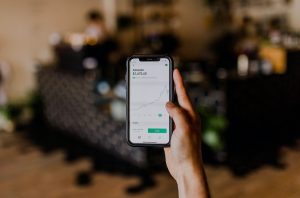Leverage in forex trade is a powerful tool that allows traders to increase their buying power and potential profits with a smaller initial investment. It is a common practice in the forex market, and many traders use it to enhance their trading strategies. However, leverage can also magnify losses, making it a risky strategy for inexperienced traders.
In simple terms, leverage in forex trade is a loan provided by the broker to the trader to increase their trading capital. The loan amount is usually a multiple of the trader’s initial investment, and the ratio is expressed as a leverage ratio. For example, a leverage ratio of 1:100 means that the trader can control a position worth $100,000 with a margin requirement of $1,000.
Leverage allows traders to trade larger positions than they could with their own capital. This means that they can potentially earn more profits if the trade goes in their favor. For example, if a trader invests $1,000 with a leverage ratio of 1:100, they can control a position worth $100,000. If the trade generates a profit of 1%, the trader would earn $1,000, which is a 100% return on their investment.
However, leverage also increases the risk of losses. If the trade goes against the trader, they could lose more than their initial investment. For example, if the same trader invests $1,000 with a leverage ratio of 1:100 and the trade generates a loss of 1%, the trader would lose $1,000, which is a 100% loss of their investment.
Therefore, it is essential for traders to understand the risks and benefits of using leverage in their trading strategies. They should also have a solid risk management plan in place to limit their losses and protect their capital.
One way to manage the risk of leverage is to use stop-loss orders. A stop-loss order is an order placed with a broker to sell a position if it reaches a certain price level. This can limit the trader’s losses if the trade goes against them.
Traders should also be aware of the margin requirements and the potential for margin calls. Margin is the amount of money required by the broker as collateral to open and maintain a position. If the trader’s account balance falls below the required margin level, the broker may issue a margin call, requiring the trader to deposit more funds to maintain the position. If the trader cannot meet the margin call, the broker may close out the position, resulting in a loss for the trader.
In conclusion, leverage in forex trade is a powerful tool that can increase a trader’s buying power and potential profits. However, it also comes with increased risk and potential for losses. Traders should understand the risks and benefits of using leverage in their trading strategies and have a solid risk management plan in place. By using leverage wisely, traders can potentially enhance their trading strategies and achieve their financial goals.





